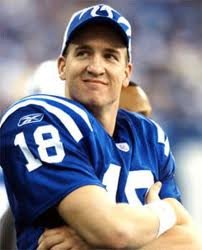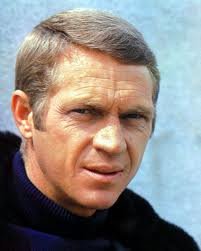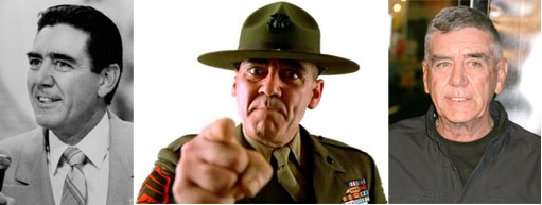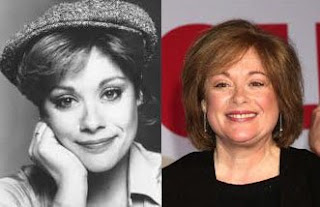A hair dryer, hairdryer or blow dryer is an electromechanical device that blows ambient or hot air over damp hair to speed the evaporation of water to dry the hair. Blow dryers enable better control over the shape and style of hair, by accelerating and controlling the formation of temporary hydrogen bonds within each strand. These bonds are powerful (allowing stronger hair shaping than the sulfur bonds formed by permanent waving products) but are temporary and extremely vulnerable to humidity. They disappear with a single washing of the hair.
Hairstyles using blow dryers usually have volume and discipline, which can be further improved with styling products, hairbrushes, and combs during drying to add tension, hold and lift.
Blow dryers were invented in the late 19th century. The first, stationary, model was created by Alexander F. Godefroy in his salon in France. The handheld, household hair dryer first appeared in 1920. Blow dryers are used in beauty salons by professional stylists and in the household by consumers.
Function
Most hair dryers consist of electric heating coils and a fan that blows the air (usually powered by a universal motor). The heating element in most dryers is a bare, coiled nichrome wire that is wrapped around mica insulators. Nichrome is used because of two important properties: It is a poor conductor of electricity and it does not oxidize when heated.
A survey of stores in 2007 showed that most hair dryers had ceramic heating elements (like ceramic heaters) because of their "instant heat" capability. This means that it takes less time for the dryers to heat up and for the hair to dry.
Many of these dryers have "normal mode" buttons that turn off the heater and blow room-temperature air while the button is pressed. This function helps to maintain the hairstyle by setting it. The colder air reduces frizz and can help to promote shine in the hair.
Many feature "ionic" operation, to reduce the build-up of static electricity in the hair, though the efficacy of ionic technology is of some debate. Manufacturers claim this makes the hair "smoother". Some stylists consider the introduction of ionic technology to be one of the most important advances in the beauty industry.
Today there are two major types of blow dryers (hair dryers): the handheld and the rigid-hood dryer.
A hood dryer has a hard plastic dome that fits over a person's head to dry their hair. Hot air is blown out through tiny openings around the inside of the dome so the hair is dried evenly. Hood dryers are mainly found in hair salons.
Types
Today there are two major types of blow dryers (hair dryers): the handheld and the rigid-hood dryer.
A hood dryer has a hard plastic dome that fits over a person's head to dry their hair. Hot air is blown out through tiny openings around the inside of the dome so the hair is dried evenly. Hood dryers are mainly found in hair salons.
Hair dryer brush
A hair dryer brush (also called "hot air brush" and "round brush hair dryer" and "hair styler") has the shape of a brush and it is used as a volumizer too.
There are two types of round brush hair dryers – rotating and static. Rotating round brush hair dryers have barrels that rotate automatically while static round brush hair dryers don't.
History
In 1890 the first hairdryer was invented by French stylist Alexander Godefroy. His invention was a large, seated version that consisted of a bonnet that attached to the chimney pipe of a gas stove. Godefroy invented it for use in his hair salon in France, and it was not portable or handheld. It could only be used by having the person sit underneath it.
Armenian American inventor Gabriel Kazanjian was the first to patent a blow dryer in the United States, in 1911.
Around 1920, hair dryers began to go on the market in handheld form. This was due to innovations by National Stamping and Electricworks under the white cross brand, and later U.S. Racine Universal Motor Company and the Hamilton Beach Co., which allowed the dryer to be small enough to be held by hand. Even in the 1920s, the new dryers were often heavy, weighing in at approximately 2 pounds, and were difficult to use. They also had many instances of overheating and electrocution. Hair dryers were only capable of using 100 watts, which increased the amount of time needed to dry hair (the average dryer today can use up to 2000 watts of heat).
Since the 1920s, development of the hair dryer has mainly focused on improving the wattage and superficial exterior and material changes. In fact, the mechanism of the dryer has not had any significant changes since its inception. One of the more important changes for the hair dryer is to be made of plastic, so that it is more lightweight. This really caught on in the 1960s with the introduction of better electrical motors and the improvement of plastics. Another important change happened in 1954 when GEC changed the design of the dryer to move the motor inside the casing.
- 1 pound linguine
- 1 stick (1/2 cup) butter
- 5 cloves garlic, minced
- 1/2 teaspoon salt
- 1/2 teaspoon black pepper
- 2 (10-ounce) cans whole baby clams, drained
- 1 tablespoon lemon juice
- 1 tablespoon chopped fresh parsley
- Cook the linguine according to the package directions; drain.
- Meanwhile, in a large skillet over medium-low heat, melt butter. Stir in garlic, salt, and pepper and sauté 2 minutes. Stir in clams, lemon juice, and parsley; cook 3 to 5 minutes, or until heated through.
- Pour clam sauce over linguine, toss until pasta is coated completely, and serve.
1944 – R. Lee Ermey, American actor (d. 4-15-18)
1954 – Donna Pescow, American actress
1976 – Peyton Manning, retired American football player


It’s probably no surprise that nearly every month on the calendar celebrates a cocktail. The only exception is April, and since it’s National Alcohol Awareness Month, it makes sense to take that month off.
A cocktail contains a spirit or a mix of spirits. While a beer is not considered a cocktail, there are beer cocktails where beer is added to a distilled ingredient. The same applies to wine.
The other months pay homage to histories, ingredients, and the makers of some legendary cocktails. January begins the year dedicating a day to the Bloody Mary, and there’s also a day for her Canadian counterpart, the Bloody Caesar, in May. January also devotes an entire week to Mocktails. In February, you can celebrate the Margarita and Kahlua. March brings us International Whisk(e)y Day, among others. Skipping back to May, you can imbibe in both Palomas and Mimosas for your celebrations.
June and July compete for the most cocktail-related days. From Martinis and Bourbon in June to Pina Coladas and Daiquiris in July, the two months cover the spectrum. There are even a few bottles of wine in between. Not only do they celebrate specific cocktails but they also celebrate the places we enjoy them. National Dive Bar Day in July invites us to celebrate the places that serve our favorite cocktails, even if it’s an ice-cold beer.
The rest of the year covers all our chilled and heated cocktails. By December, we readily reminisce National Repeal Day and the Bartenders who keep that era and the skills alive.
We have only skimmed the surface of the cocktails celebrated on the calendar, so National Cocktail Day allows you to celebrate whichever one you like!
HOW TO OBSERVE
- Create your favorite cocktail to celebrate.
- Explore cocktail ingredients or read a bartender’s manual.
- Learn the finer elements of mixing cocktails and expand your home bar.
- Visit a speakeasy or take a tour of your favorite distillery.
- Host a cocktail tasting session. Create a classic menu with a professional bartender who provides history and describes the nuances behind the ingredients.
- Attend a cocktail tasting party. You will learn more about how and why ingredients are combined the way they are.
- Visit your local bookstore and pick up a cocktail or bar book. Follow the recipes and read about the histories these bartenders share. We recommend The Essential Bar Book by Jennifer Fielder, The Art and Science of The Perfect Cocktail by Janice Dreese, and Craft Cocktails at Home: Offbeat Techniques, Contemporary Crowd-Pleasers, and Classics Hacked with Science by Kevin Liu.
- Visit your local bar and pick your bartender’s brain. Some like to share their techniques. Ask them what their favorite cocktail is. And, be sure to tip them well for their advice and service.
- Try making a mocktail. Especially on those weeknights when work is busy, and you need to keep up. Many of them infuse nutrients many of us are lacking. Keep these recipes on hand for your friends who are designated drivers, sober for life, supporting a friend, or for any reason.
- As always, ANY TIME we are indulging in spirits and alcohol, DON’T drink and drive. Designate a sober driver. Call a taxi, Uber, Lyft, or friend.
- When you celebrate, share your favorites by using #NationalCocktailDay on social media.
NATIONAL COCKTAIL DAY HISTORY
Jace Shoemaker Galloway founded National Cocktail Day in 2013
Cocktail FAQ
Q. What is the most popular spirit used in cocktails?
A. Vodka is most commonly used as a base spirit for cocktails. It’s a versatile alcohol, and makers infuse it with many different flavors adding to its appeal. It also pairs well with simple or complex ingredients.
Q. What kinds of tools do I need to make great cocktails?
A. The ingredients are the most important tool in your bar collection. However, some of the most essential tools for making cocktails include a shaker, strainer, corkscrew, and muddler. Other tools that make your mixing easier include ice tongs, spoons, pourers, and straws.









No comments:
Post a Comment